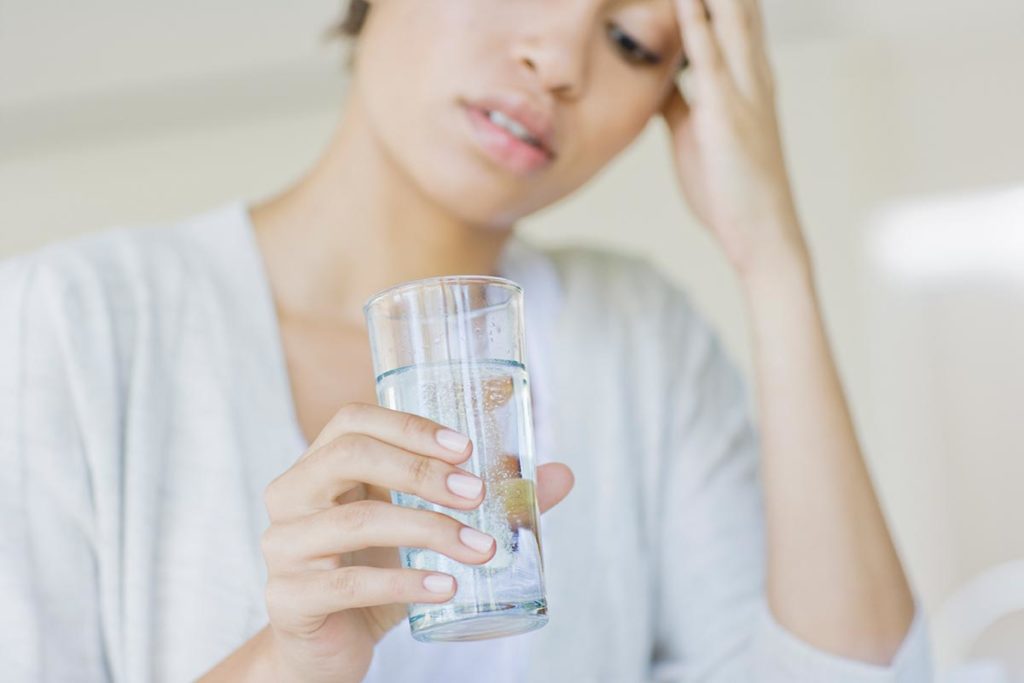You won’t remember having a colonoscopy. But you’ll likely remember the colonoscopy prep drink.
Preparing for a colonoscopy typically involves drinking a substance that will clear your bowels by giving you diarrhea. Most people who’ve had a colonoscopy have nothing good to say about that drink.
“Mine had a pineapple taste,” says UVA Cancer Center director Thomas Loughran, MD. “I don’t like pineapples anymore.”
Why is the colonoscopy prep drink so bad? Is there anything you can do to make colonoscopy prep taste better? Amanda Johnson, a registered nurse who works with colonoscopy patients, answered some common questions. As one of our most popular posts last year, we’re reposting during Colorectal Cancer Awareness Month.
Johnson’s advice? Go easy on the fiber in the days before and use a straw to make sure you get enough of the colonoscopy prep drink. You may not enjoy the prep, but you’ll be glad you got a colonoscopy. It’s saved many lives and it could save yours.
Colonoscopy Prep: What’s Involved & Why
During a colonoscopy, your doctor uses a colonoscope — a small, lighted camera inside a soft tube — to examine your colon. If your doctor sees polyps, small growths of cells that can turn into cancer, they’ll snip or burn them off. Your provider will then send the polyps to a lab for testing.
For the doctor to do this safely, your colon has to be clean and empty, Johnson says. Otherwise, they might not be able to see polyps or suspicious areas. A clear view also helps prevent a perforation, or a tear in the colon. If your colon isn’t clean when you show up for your appointment, your care team may need to cancel the procedure.
So if you’re getting a colonoscopy, you should start eating a low-fiber diet five days before the procedure. That means avoiding:
- Whole grains
- Bran
- Oatmeal
- Granola
- Corn
- Nuts
- Popcorn
- Fruits and vegetables with skins or seeds that you can’t remove
The day before the procedure, you can only have clear liquids, including the notorious pre-colonoscopy drink.
The Different Colonoscopy Drinks
Depending on your insurance and product availability, your doctor may prescribe a drink or recommend an over-the-counter product. All of these drinks have active ingredients that make you poop. A lot.
Common drinks include:
- GoLytely (prescription)
- Nutytely (prescription)
- Colyte (prescription)
- Suprep (prescription)
- Gatorade mixed with Miralax (over-the-counter, although your doctor can write a Miralax prescription if you can’t afford to pay for it out of pocket)
Johnson says GoLytely is the “gold standard” because it works the best. In other words, it leaves the smallest amount of poop in your colon. Unfortunately, there’s currently a GoLytely shortage, so Johnson’s team falls back on the other options.
How to Make Colonoscopy Prep Taste Better
The drinks all have one thing in common: You have to drink a lot, anywhere from 22 to 135 ounces. Suprep is on the lowest end of that, but it tends to be pricier than other options.
That’s a major reason why the prep has such a bad reputation, Johnson says. “It is a lot of volume to take in a relatively short amount of time,” she explains. “Some patients complain of nausea or vomiting.”
The prescription preps often come with a lemon, berry, or pineapple flavor packet. If you’re getting Miralax and Gatorade, you can choose the Gatorade flavor — except anything that’s purple or red. Those can discolor the colon and resemble blood.
Johnson also suggests:
- Mixing sugar-free Kool-Aid or Crystal Light into your drink
- Make it cold: Add ice or mix your prep early so it can chill in the fridge before you have to drink it.
- Drink through a straw.
The Bottom Line: Just Do It
Get a Colon Cancer Screening
Unsure about a colonoscopy? Ask your doctor about the right screening for you.
If your doctor recommends a colonoscopy, don’t let the prep scare you away. The American Cancer Society (ACS) estimates that colorectal cancer — colon, anal, and rectal cancer — will kill 52,980 people in the U.S. in 2021. And this cancer often has no symptoms until it’s advanced, so you won’t know you have it without a screening.
Death and diagnosis rates are increasing in people under 55, which is why the ACS now recommends getting your first screening at 45. If you have a family history, you should talk to your primary care doctor about getting a screening sooner.
“Colonoscopies save lives!” Johnson says. “Polyps that may otherwise turn into cancer can be removed. We promise to take excellent care of you. And we’ll give you the best peanut butter crackers and ginger ale of your life when you’re done.”
